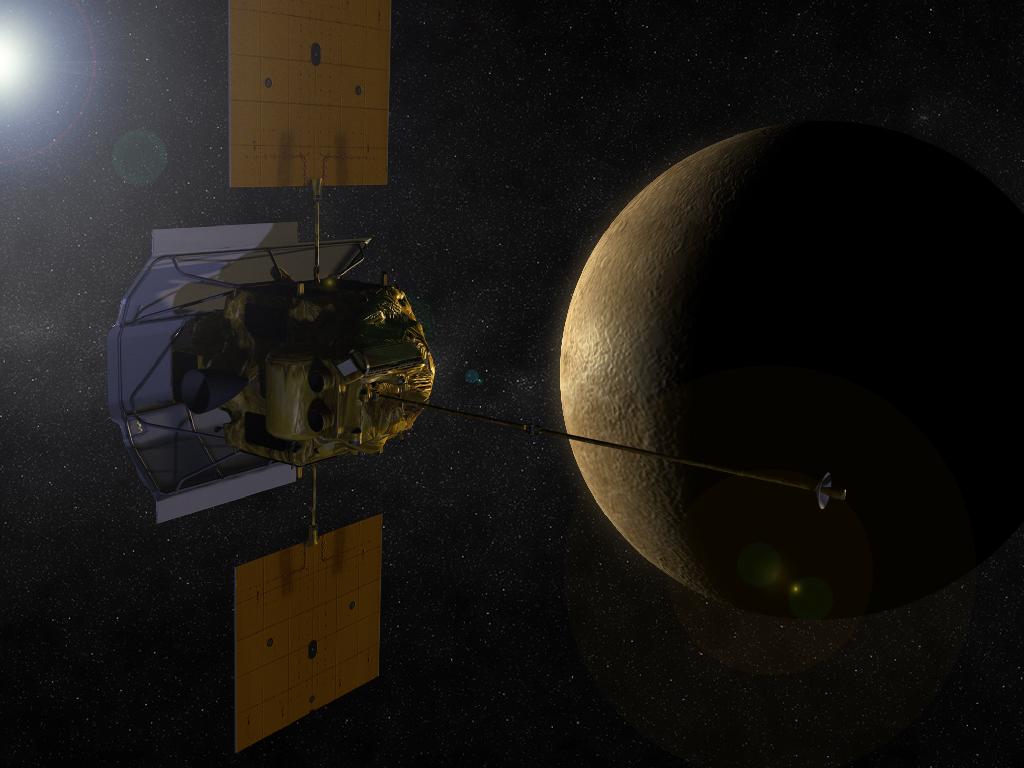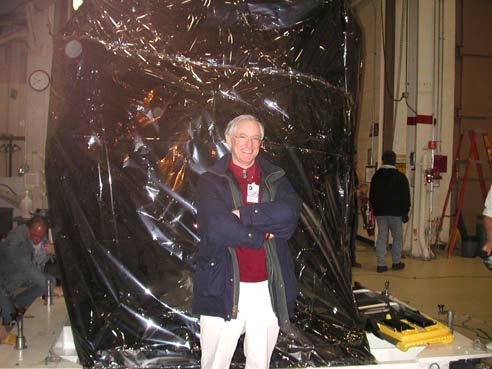When Messenger Arrives in Orbit: Q&A With Sean Solomon, NASA's Mercury Boss

NASA's Messenger probe promises to show us a whole new Mercury when it arrives in orbit around the planet next week.
The spacecraft has been flying almost seven years, but just now will it achieve its primary mission – an up-close and personal study of the closest planet to the sun from orbit.
So far, the Messenger spacecraft has flown by Mercury three times and snapped some amazing new photos of the desolate, rocky world. But Messenger will be the first spacecraft ever to orbit Mercury for long-term observations, with many scientist eager to see what it turns up. [Photos of Mercury from Messenger's Flybys]
SPACE.com talked to Messenger's principal investigator Sean Solomon, director of the Department of Terrestrial Magnetism at the Carnegie Institution of Washington, about what's in store for the mission and its excited scientists:
SPACE.com: What's your mood approaching this milestone?
Sean Solomon: We cannot wait for orbital insertion. We've, of course, been devoting an enormous amount of time to the orbital insertion event. To testing everything, to contingencies, to analysis, to practice. We've had our mission operations team practice with an independent team throwing in anomalies. The team didn't know what they were going to get – they've been going through their paces.
The science team is ready to start taking orbital observations, so we are very much looking forward to what all of us hope is a successful orbit insertion into the desired science orbit and a successful commissioning of the spacecraft and the payload and the beginning of orbital operations. [Infographic: Messenger Mission to Mercury]
Breaking space news, the latest updates on rocket launches, skywatching events and more!
SPACE.com: If you had to pick one question that you hope Messenger answers when it enters orbit around Mercury, what would it be?
Solomon: That's an unfair question! That's a "Sophie's Choice" question. I have now been with this mission for 15 years, and these are my children. These questions are my children and these instruments.
I come out of geophysics, and so I got interested in the origin of the great faults, the amount of shrinkage of the planet, the origin of the magnetic field, the whole question of how Mercury ended up with such a large core as a fraction of its mass – twice as large a fraction as Earth or Venus or Mars. These are large-scale structural and evolutionary questions that I first got interested in right after Mariner 10.
But I'm now fascinated by the magnetosphere and the exosphere, charged particles, and so I can't give away any of those.
SPACE.com: How much of what Messenger has already revealed has been surprising?
Solomon: A lot of the aspects of the volcanism story were surprising. And the degree to which the magnetosphere and exosphere change – small changes in solar and interplanetary conditions – was a surprise. And so we're very much looking forward to watching those evolve in real-time from orbit, and to do so at a time when solar activity is ramping up.
The interaction between the magnetosphere and the exosphere are more extreme than we expected. So it's great fun.
SPACE.com: So what if humans had a really great spacesuit and they could visit the surface of Mercury. What would it be like?
Solomon: It would need to be a really great spacesuit. It would be a pretty stark landscape. The sky would be black. You wouldn't see the exosphere, you wouldn't smell the exosphere.
You'd be walking around on a landscape with many impact craters, with huge cliffs. The sun would be as much as 11 times brighter than on the Earth. So in terms of the dimension on the sky it'd be more than three times as big.
You would be subjected to charged particles of high energy, other kinds of radiation, so that's why you'd need that great spacesuit.
The day would be three Earth-months long, and so would the night. And so you would have to be able to withstand an extreme range of temperature. At the equator, the range in temperature from day to night is 600 degrees Centigrade, 1100 degrees Fahrenheit. So that spacesuit has to be able to withstand that kind of range of temperature, and you'd have to bring power sources that work for long nights
You might be able to dive into some permanently shadowed craters, and find, within a meter or two of the surface, water ice, if that's the right explanation.
So it would be a very different kind of place. A somewhat lunar-like landscape with more topography. And you would just be conscious in the day side of how close you were to the sun.
You can follow SPACE.com senior writer Clara Moskowitz on Twitter @ClaraMoskowitz.

Clara Moskowitz is a science and space writer who joined the Space.com team in 2008 and served as Assistant Managing Editor from 2011 to 2013. Clara has a bachelor's degree in astronomy and physics from Wesleyan University, and a graduate certificate in science writing from the University of California, Santa Cruz. She covers everything from astronomy to human spaceflight and once aced a NASTAR suborbital spaceflight training program for space missions. Clara is currently Associate Editor of Scientific American. To see her latest project is, follow Clara on Twitter.

